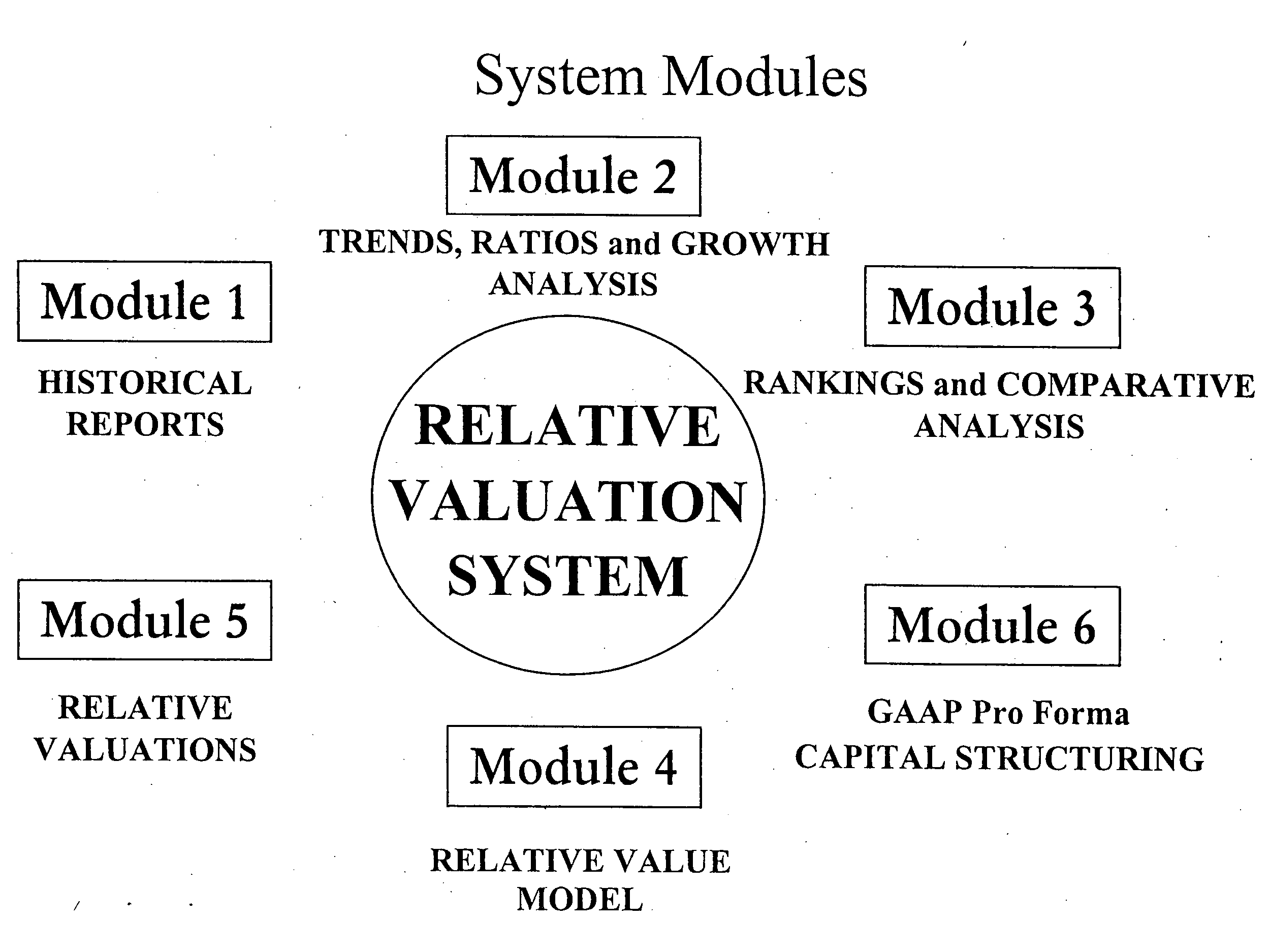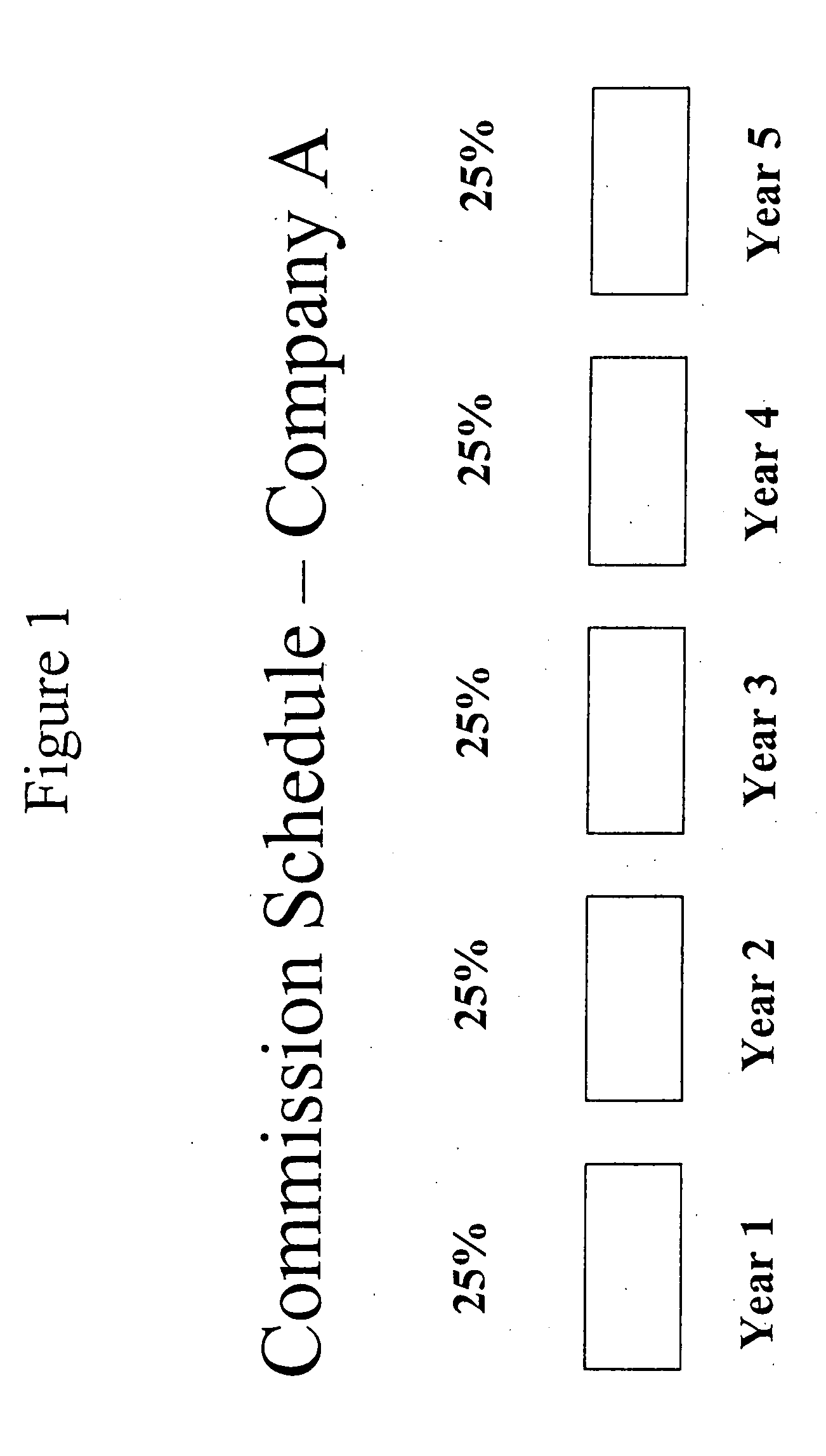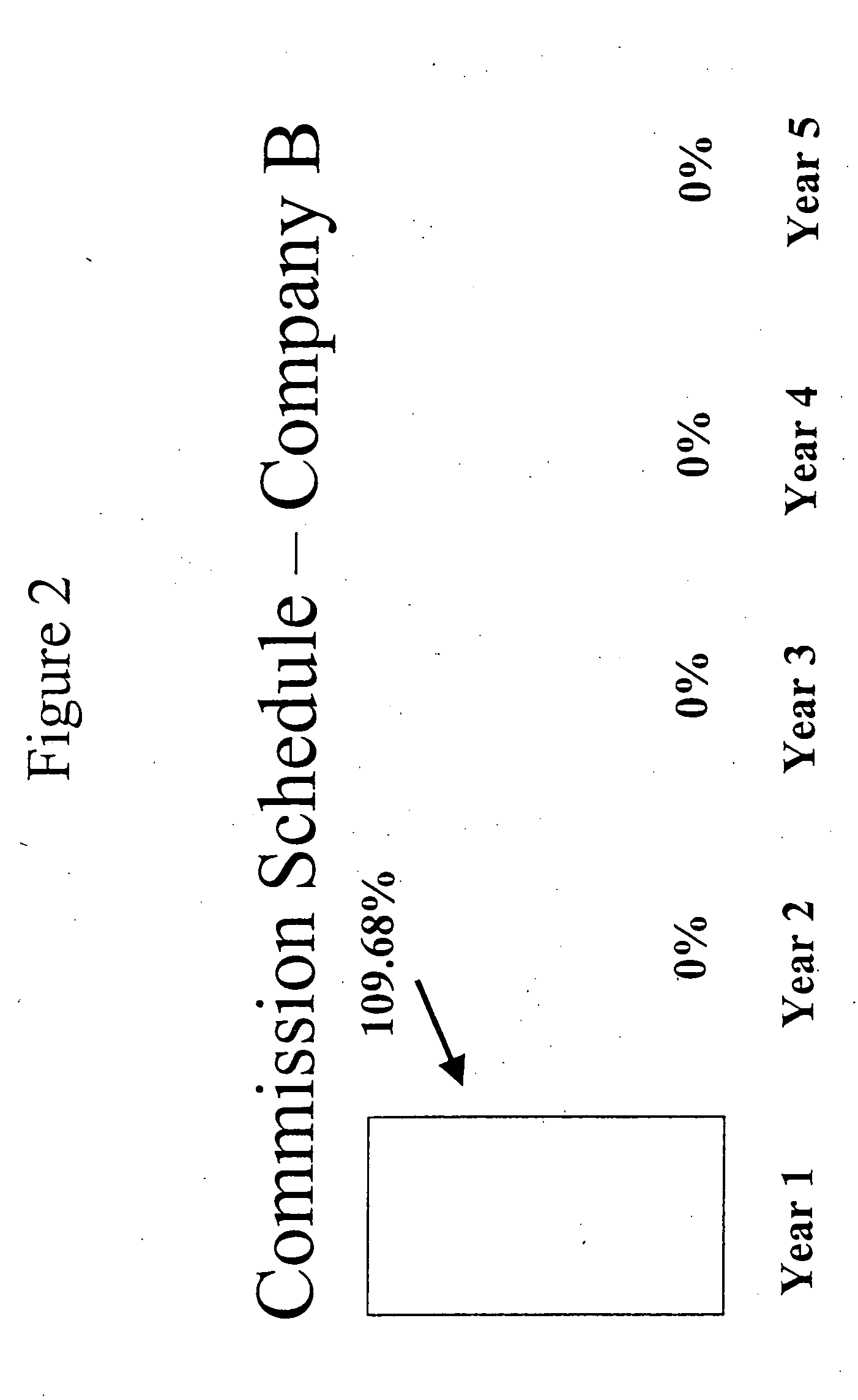Relative valuation system for measuring the relative values, relative risks, and financial performance of corporate enterprises
a technology of relative valuation and relative risks, applied in the field of relative valuation system for measuring the relative value, relative shareholder risk, financial performance of corporate enterprises, can solve the problems of increasing the difficulty of outsiders assessing the value of corporations based on reported gaap income or gaap equity, and the inability to see the reported income results and balance sheets clearly and accurately
- Summary
- Abstract
- Description
- Claims
- Application Information
AI Technical Summary
Benefits of technology
Problems solved by technology
Method used
Image
Examples
Embodiment Construction
[0065] In describing preferred embodiments of the invention illustrated in the drawings, specific terminology will be resorted to for the sake of clarity. However, the invention is not intended to be limited to the specific terms so selected, and it is to be understood that each specific term includes all technical equivalents which operate in a similar manner to accomplish a similar purpose.
A. Relative Value Method
[0066] With the Relative Value Method, the value of a corporation at anytime can be defined by the following four
Categories of value:
[0067] Category I—Current Realizable Value [0068] Category II—Value of Existing Enterprise [0069] Category III—Infrastructure Value [0070] Category IV—Venture Value
[0071] The Relative Value Method generally concerns itself with the change in the first three Categories of values. For values to be recognized within the first three Categories of value, they must be demonstrable based on actual past performance. Items, which can not be val...
PUM
 Login to View More
Login to View More Abstract
Description
Claims
Application Information
 Login to View More
Login to View More - R&D
- Intellectual Property
- Life Sciences
- Materials
- Tech Scout
- Unparalleled Data Quality
- Higher Quality Content
- 60% Fewer Hallucinations
Browse by: Latest US Patents, China's latest patents, Technical Efficacy Thesaurus, Application Domain, Technology Topic, Popular Technical Reports.
© 2025 PatSnap. All rights reserved.Legal|Privacy policy|Modern Slavery Act Transparency Statement|Sitemap|About US| Contact US: help@patsnap.com



